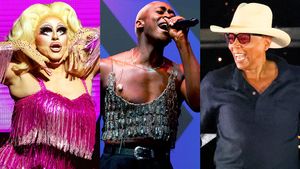A larger number of teenagers are identifying as gay, lesbian, or bisexual in the U.S., according to a recent national study.
Surveys by the U.S. Centers for Disease Control and Prevention show that between 2015 and 2019 those who identified as "non-heterosexual" grew from 8.3 percent to 11.7 percent in 15-to-17-year-olds, HealthDay News reports. The results of the surveys were published in JAMA Pediatrics.
"Although our analyses demonstrated that there has been a significant increase in the proportion of girls and boys that self-identified as gay, lesbian or bisexual, we cannot be certain if this represents a true increase of this magnitude, or if it reflects at least in part, greater comfort by teens with acknowledging a non-heterosexual identity on an anonymous questionnaire," said study coauthor Dr. Andrew Adesman, chief of developmental and behavioral pediatrics at New York City's Cohen Children's Medical Center.
The latest study, the CDC's Youth Risk Behavior Survey, included responses from 20,440 boys and 21,106 girls, according to HealthDay News. The study has included questions about respondents' sexuality since 2015.
Boys who identified as non-heterosexual rose from 4.5 percent to 5.7 percent. There was a greater increase in girls who identified as non-heterosexual, which was 12.2 percent to 17.8 percent.
Adelson explained that the larger increase in girls' responses may be that the stigma boys still face may be greater than the stigma girls face.
"Gen Z youth also have the most positive attitudes towards the LGBTQ community, which can reduce the stigma associated with identifying in this way," said Dr. Amy Green, vice president of the Trevor Project, an organization providing suicide prevention services to LGBTQ+ youth.
Green said that young people now have more information that can help them understand their sexual identity, HealthDay News reports. They understand and want to express their identity as well.
"[This] is why we advocate for the collection of this information in both research and clinical settings, to better inform policies, programs and practices aimed at supporting the well-being of LGBTQ youth," Green said.
"High school can be a very difficult time for teens in so many ways, and it is especially challenging for teens who identify as gay or bisexual," Adesman said. "Knowing that gay and bisexual youth are at greater risk for social isolation and victimization, as well as emotional problems, school personnel and health care professionals need to be more vigilant regarding these concerns for what appears to be an increased proportion of high school students in the U.S."



















































































